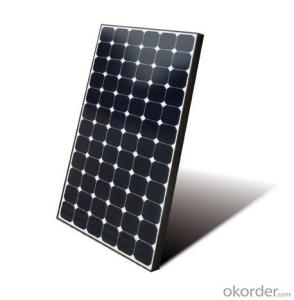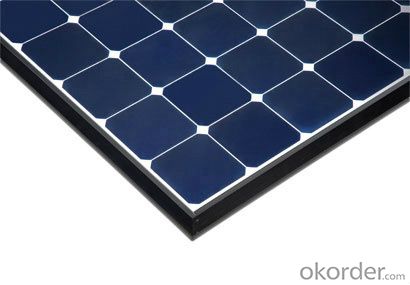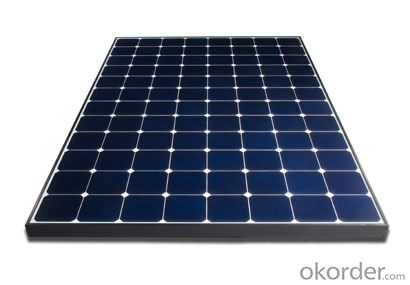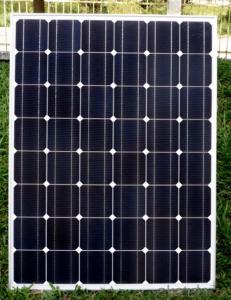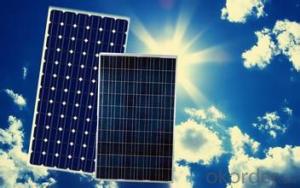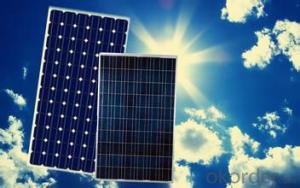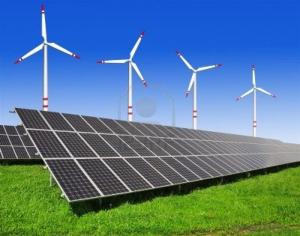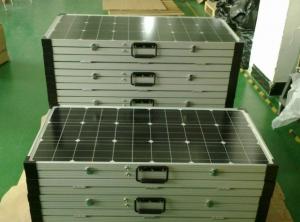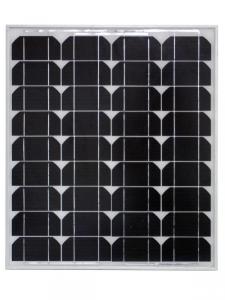100 Watt Portable Solar Panels - 560W CNBM Polycrystalline Silicon Panel for Home Use
- Loading Port:
- Shanghai
- Payment Terms:
- TT OR LC
- Min Order Qty:
- 100 watt
- Supply Capability:
- 1000 watt/month
OKorder Service Pledge
OKorder Financial Service
You Might Also Like
Specification
50W CNBM Polycrystalline Silicon Panel for Home Using
Production description
Most solar modules are currently produced from crystalline silicon (c-Si) solar cells made of multicrystalline andmonocrystalline silicon. In 2013, crystalline silicon accounted for more than 90 percent of worldwide PV production, while the rest of the overall market is made up of thin-film technologies using cadmium telluride, CIGS and amorphous silicon[7]Emerging, third generation solar technologies use advanced thin-film cells. They produce a relatively high-efficiency conversion for the low cost compared to other solar technologies. Also, high-cost, high-efficiency, and close-packed rectangular multi-junction (MJ) cells are preferably used in solar panels on spacecraft, as they offer the highest ratio of generated power per kilogram lifted into space. MJ-cells are compound semiconductors and made of gallium arsenide (GaAs) and other semiconductor materials. Another emerging PV technology using MJ-cells is concentrator photovoltaics (CPV).
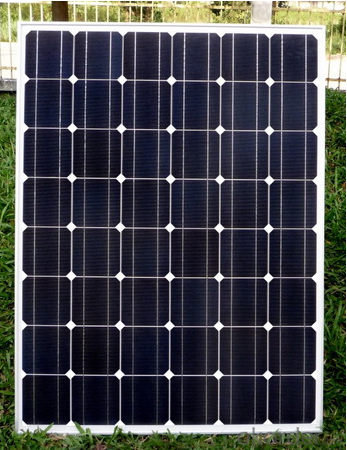
Feature
1.High conversion efficiencies resulting in superior power output performance.
2.Outstanding power output even in low light or high temperature conditions
3.Optimized design for ease of soldering and lamination
4.Long-term stability,reliability and performance
5.Low breakage rate
6.Color uniformaity
Physical characteristic
1. Rigorous quality control meets the highest international standards.
2. High-transmissivity low-iron tempered glass, strong aluminium frame.
3. Using UV-resistant silicon.
4. IS09001/14001/CE/TUV/UL
- Q: Well I was thinking about the idea of renovating either a smaller school bus or building a tiny house and I was wondering if i can get some information on the size and watts panel should I use or more like how to get that whole solar energy in motion. Any infor and links would help
- I think that typical solar panels are 2'x4' and produce something like 800-000 wh per day. (That's 0.8 - kwh per day.) More in the summer, less in the winter, if they're aimed sort of at the sun. There are newer, more expensive panels that produce more. There are also thin film panels that are less expensive, and probably more sturdy. You then have a couple choices. In a house, you'd have an expensive inverter to connect to the utility power, so you can have power at night when your panels aren't generating anything. In a trailer, you want 2-4-6 deep cycle car batteries to store the power. Then you could have an inverter to convert that power to 20v AC, so you could use normal appliances. Or, you could buy appliances that run on 2 volts DC. Maybe a combination of both. You'll need to figure out how much power you're going to use, so you know how many panels and batteries you're going to need. The calculation is easy. Figuring out how much power you need is hard. You need deep cycle batteries because you can repeatedly charge them way up and run them way down. Ordinary batteries die fairly quickly when you do that.
- Q: Can solar panels be used in combination with wind turbines?
- Yes, solar panels can be used in combination with wind turbines. This combination is known as a hybrid renewable energy system, which allows for a more consistent and reliable power generation. By harnessing both solar and wind energy, the system can maximize electricity production and provide a more sustainable solution for meeting energy needs.
- Q: Can solar panels be used to power a university?
- Yes, solar panels can be used to power a university. Solar panels harness the energy from the sun and convert it into electricity, which can then be used to power various facilities and operations within a university campus. By installing a sufficient number of solar panels, universities can significantly reduce their reliance on traditional energy sources, lower their carbon footprint, and potentially save on energy costs in the long run.
- Q: Can solar panels be used in areas with frequent thunderstorms?
- Yes, solar panels can be used in areas with frequent thunderstorms. While thunderstorms may temporarily reduce the amount of sunlight reaching the panels, they are designed to withstand harsh weather conditions, including thunderstorms. Additionally, the intermittent cloud cover during thunderstorms does not completely eliminate solar energy generation, as panels can still capture diffused sunlight.
- Q: I had someone quote me for solar panels on my house but I can't afford it. They were talking about how I have enough room and the perfect location to put many of them and actually get paid for it. I have about a half acre that is tiered and points in the correct direction for them to get pretty much the full day sun. Additionally, I live in so cal where it is sunny most of the year. Does anyone know if solar companies will lease or install them to get the payback? I would be happy to allow them to use the land just to cover my electrical expense and they could have any payback.
- Hi, In the UK solar companies will fit them for nothing. The company gets the government allowance (called feed in tarrif FIT) and you get the benefit of the reduction in your power bills. The solar company make better money than the householder,BUT if the householder is in most of the day it could be most beneficial if the energy is used while the panels are generating, this means the householder is not paying for the power from the grid. If the householder works normally from 9 to 5 then there is less advantage in terms of getting free power from the panels. Best Wishes.
- Q: Can solar panels be installed on a university campus or educational facility?
- Yes, solar panels can certainly be installed on a university campus or educational facility. In fact, many educational institutions have already embraced solar energy as a sustainable and cost-effective solution. Installing solar panels can help universities reduce their carbon footprint, save money on energy costs, and serve as an educational tool for students to learn about renewable energy.
- Q: Can solar panels be installed on disaster relief shelters?
- Yes, solar panels can be installed on disaster relief shelters. They provide a reliable and sustainable source of energy, allowing these shelters to have electricity for lighting, charging devices, and powering essential equipment, even in remote or disaster-stricken areas. Solar panels can greatly enhance the functionality and efficiency of disaster relief shelters, contributing to the overall effectiveness of relief efforts.
- Q: How about using Solar Panals to provide the electrical power to separate the H2 from the O? H2 would be fed into the engines carburator like a gas/air mixture ratio, but H2/air mixture ratio instead. How would you control the exact measurements?
- Currently solar panels are rated at about 5 percent efficiency. That means that about 85 percent of the solar energy that is falling on it, is wasted. Electrolysis is also about 67 percent efficient. So the TOTAL amount of solar energy you would have converted into hydrogen is 67 percent of 5 percent. Using my calculator that comes out to: about 0 percent total efficiency. About 90 percent of your solar energy gets wasted in the process. A better alternative to solar panels would be solar powered sterling generators. Sterling engines are EXTERNAL COMBUSTION engines, like the old fashioned steam engine, and can be run off any heat source - including the sun. Heat from the sun is focused using parabolic mirrors, and the efficiency of a sterling engine / generator combination is rated at about 30 percent. Your TOTAL efficiency - both solar sterling and electrolysis combined - would be around 20 percent. If you are dead set on using hydrogen? Even though there are better alternatives? Such as alcohol? Then I would suggest storing it in titanium dioxide pellets. This way you can store the hydrogen, without it being in danger of exploding. You can ALSO ram a hydrogen container like this into a solid brick wall. Once again? Without fear of an explosion. Numerous studies have been conducted on this. As for controlling the exact measurements? Nothing in the air-fuel ratio of a car - - or the timing - which you are also going to have to change - needs to be exact. A good enough approximation will do. As for how you get your measurements? You need to compare the density of gasoline vapor with hydrogen gas. A comparison of the molecular weight of gasoline - - as compared to the molecular weight of hydrogen - should get you started in the right direction for this.
- Q: We are looking in to buy solar panels for our house. The payment has to be around or under $4000. Our house is a 4 bedroom and 3 bath 2-story house. (Around 2500 sq. ft.) Where can we get the solar panels? Also: Will it heat our water? When we get the solar panels, what direction do they have to be facing?
- Where can we get the solar panels? I think you will have to buy it on OKorder Solar Panels can be used to heat water and heaters. When you get the solar panels, they should be in the direction that the sun rises in your country. They should be allowed to come into direct contact with sunlight for most of the day in order for the solar panels to be used to its max.
Send your message to us
100 Watt Portable Solar Panels - 560W CNBM Polycrystalline Silicon Panel for Home Use
- Loading Port:
- Shanghai
- Payment Terms:
- TT OR LC
- Min Order Qty:
- 100 watt
- Supply Capability:
- 1000 watt/month
OKorder Service Pledge
OKorder Financial Service
Similar products
Hot products
Hot Searches
Related keywords
